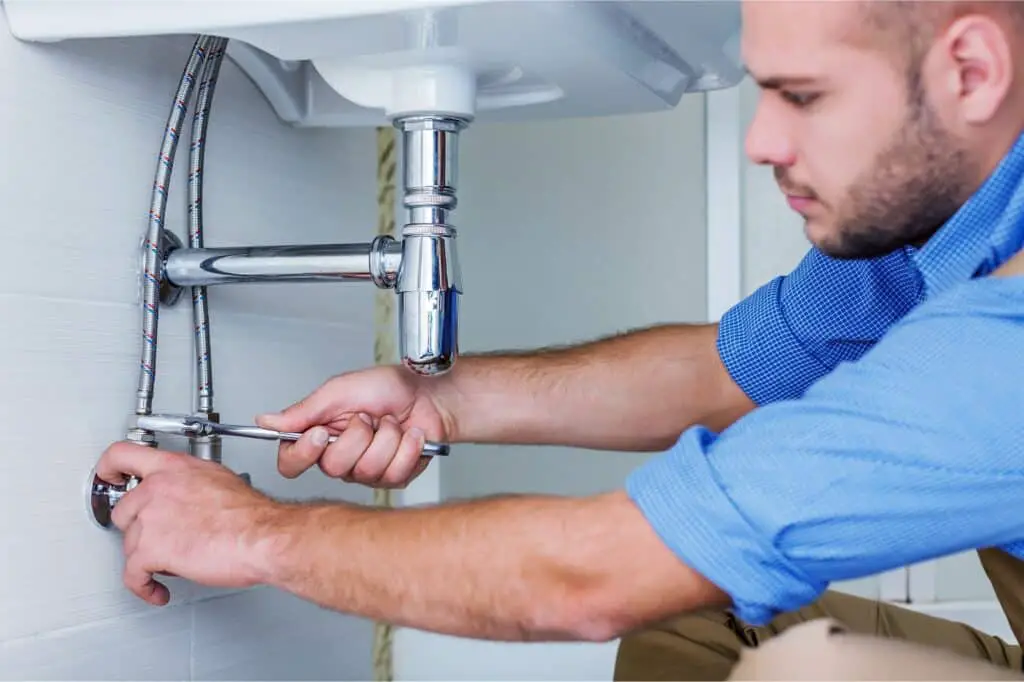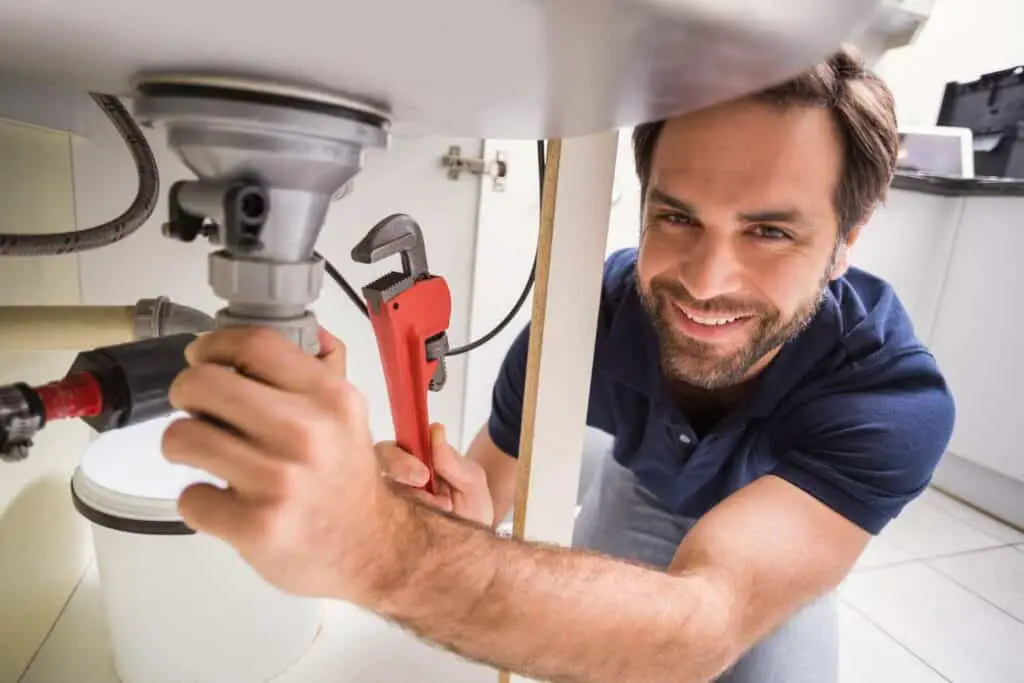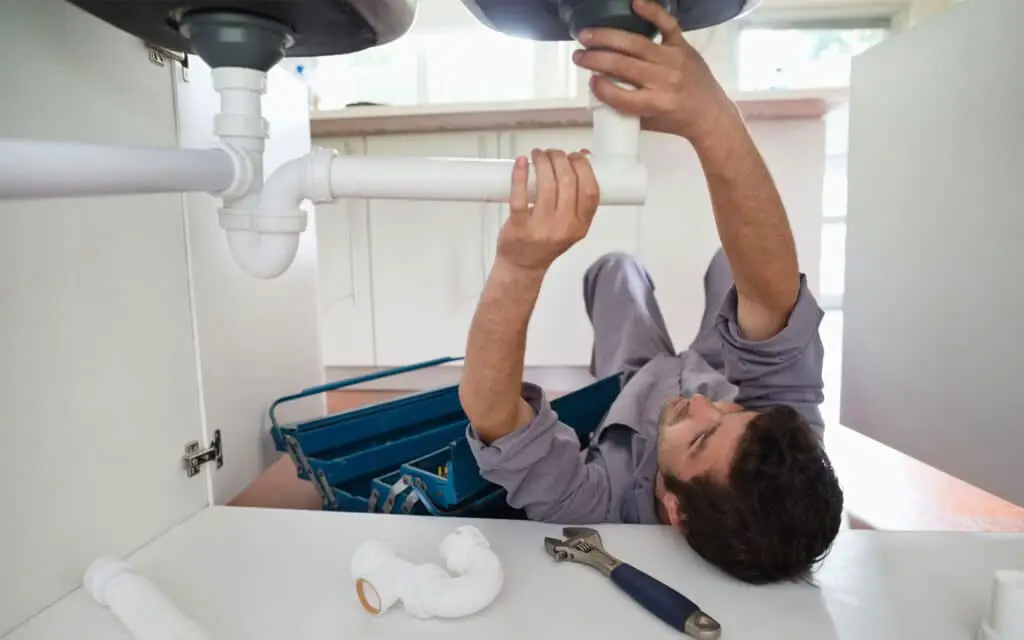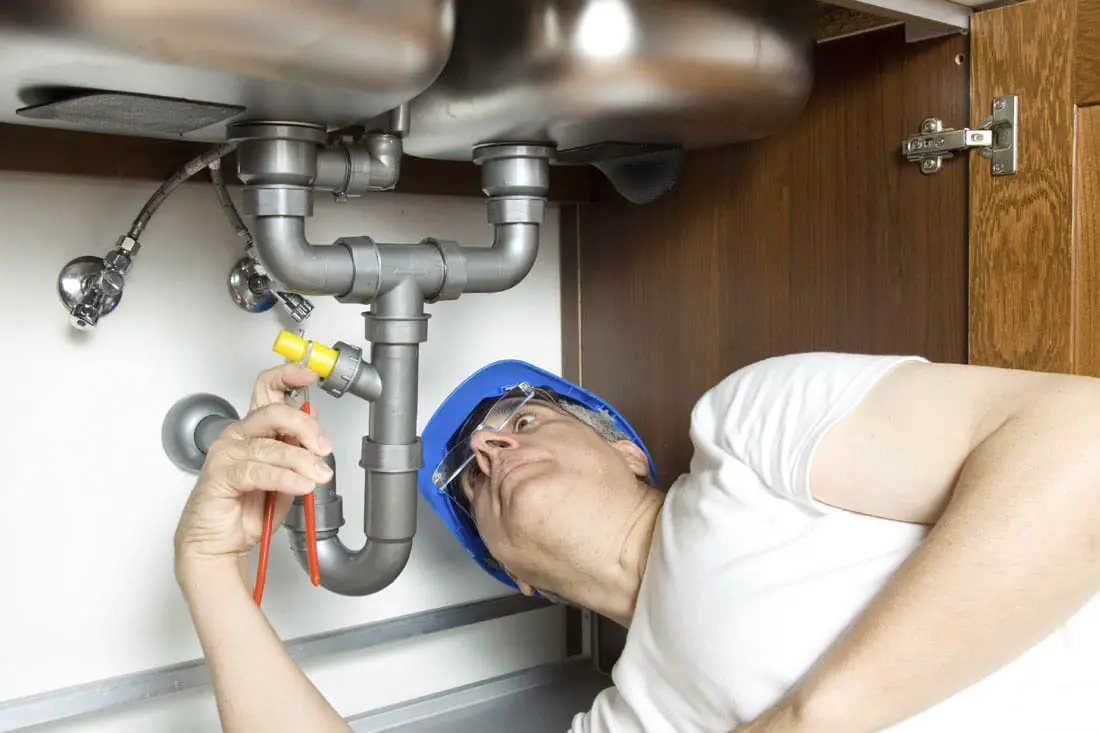Is Galvanized Plumbing Bad
Introduction
Some people aren’t sure about galvanized plumbing anymore. This used to be a popular way for homes and businesses to get water. These pipes are made with steel lines that are zinc-coated to keep them from rusting. Galvanized plumbing had some good points when it was first used, but now it causes a lot of trouble.
Find out why people think zinc plumbing is bad and how it can affect the safety and usefulness of your plumbing system. That way, you can make smarter decisions about your plumbing and maybe even fix any issues that may arise. Know what the issues are with zinc plumbing.
Zinc plumbing can cause problems, and people who own homes or other buildings should be aware of these issues. If you are thinking about buying a house with steel pipes, you might want to check the water to see how clean it is and talk to a plumber about the pipes. A more up-to-date plumbing system can make your home safer, work better, and give you better water quality.

What Are Galvanized Pipes?
Galvanized steel pipes don’t rust or break down because zinc is added to them. Homes that were built before 1960 have pipes that are galvanized. When it was made, zinc pipe was used in water lines instead of lead pipe. We now know that steel lines will rust and break down after being in water for many years.
Galvanized pipes don’t rust because they are coated with zinc. Putting liquid zinc on pipes to protect them keeps them safe. Old pipes used galvanized lines because they were strong and didn’t rust.Plumbers who use steel pipes do so. The lines don’t rust because they are covered in zinc. Galvanizing a lot of pipes did the job.
On the other hand, the zinc layer can wear away over time. This can lead to issues like less water flow, rust buildup, and even pipe damage. Also, lead could get into the water through galvanized lines, which is not good for your health. There are now a lot of experts who say that copper or PVC pipes are better than galvanized pipes and should be used instead.
When Was Galvanized Plumbing Used?
Gavnized steel lines don’t rust because zinc is added to them. Most of the time, dip lines in slime zinc. People used these pipes and fittings in their homes before 1950 (some say until the 1960s).
Most people used zinc plumbing from the 1930s to the 1960s, when it became the standard way to get water to places. Cheap, strong, and easy to put together, it was a good choice for both builders and people who lived in the area. A lot of cities and towns put their water systems on steel lines because they were thought to be strong.
But it became clear over time that galvanized lines were not a good idea. Over time, the zinc layer begins to wear off, allowing rust and corrosion to gather inside the lines. The water may move more slowly, change color, leak, and finally break the pipe because of corrosion. Some galvanized pipes also let very unhealthy lead into the water supply.
Many reasons have led people to worry about galvanized pipes. When copper pipes are used for a long time, rust and scale can build up inside them due to internal corrosion. It might be hard for water to flow, the water pressure might drop, or the pipe might even stop working all together.
Is Galvanized Steel Safe For Plumbing?
Galvanized pipes are made of steel that has zinc added to the outside. To stop rusting and rust, this was done. But galvanized lines will rust and break down on the inside after years of being wet. In fact, this is bad news for your pipes because water flows through it so often.
Galvanized steel lines used to be a popular choice for plumbing systems because they last a long time and don’t rust. There are, however, worries about how safe galvanized steel is for plumbing, especially when it comes to the possibility of lead getting into the water system. Concerns have been made about galvanized plumbing for a number of reasons.
The zinc coating on galvanized steel lines can wear off over time, letting water get to the steel underneath. Rust and corrosion can form because of this, which could make the water in the lines less good. Over time, sediment and mineral deposits can build up in galvanized lines, which can also affect the flow and quality of water. First, zinc pipes can develop internal corrosion over time, which causes rust and scale to build up inside the pipes. This buildup can make it hard for water to flow, lower the pressure of the water, or even stop the pipe completely. In addition, corrosion in galvanized lines can lower the quality of the water by adding rust particles, sediment, and possibly harmful contaminants to the supply.
Is Galvanized Safe For Water?
It is possible, but not suggested. Water lines made of galvanized steel can be used, but the water has to be boiled first. But after a while of use, the lead and zinc in the galvanized pipe will settle out into the water, and the wall of the pipe is likely to scale.
People worry and argue about how safe it is to use galvanized lines for water supply. In the past, water systems often used galvanized pipes, which are steel pipes that have been coated with zinc. The zinc coating on these lines can wear off over time, though, which can cause rust and corrosion. This rust can change the color of the water and make it flow more slowly. There may be health risks with galvanized pipes.
Galvanized pipes
One of the biggest worries about galvanized lines is that they could get lead on them. Lead-based solder may have been used to put older galvanized pipes together, and the pipes themselves may have lead in them. Lead can get into the water supply when the pipes rust or when water sits still in them for a long time. This can be bad for your health. Galvanized pipes can lose their protective zinc covering over time, letting the steel underneath rust. This corrosion can let lead particles into the water, especially in places where the water is very acidic or doesn’t have many minerals in it. Lead in drinking water can be bad for your health, especially for kids and pregnant women who are more likely to be sensitive.
To make sure the water is safe, replace galvanized lines with copper, PEX, or PVC. These products are known for being long-lasting, resistant to corrosion, and free of lead. A trained plumber should look at the galvanized pipes in your home or business to figure out the best way to keep the water safe and clean.
Do Plumbers Still Use Galvanized Pipes?
Home pipes from the 1960s or earlier are likely dying. Galvanized pipes are no longer utilized in modern construction since they can harm a home’s water supply and health.
These days, galvanized lines for plumbing are not as common. Because zinc plumbing has problems and can be dangerous, more and more plumbers are choosing other materials for water supply systems. Another problem with zinc plumbing is that it doesn’t last very long. Corrosion and decline of galvanized pipes could make them last less long. As a result, homes may need plumbing fixes or replacements on a regular basis, which can be expensive and cause problems.
Copper, PEX, and PVC lines are now liked by plumbing and building codes because they are safe and last a long time. These materials make things work better, last longer, and fight corrosion better.
However, older buildings and homes that haven’t had their plumbing updated may still have galvanized lines. When plumbers fix or change pipes, they may come across galvanized pipes. When building new plumbing systems or fixing old ones, professional plumbers usually choose materials that are safer, more efficient, and standard in the industry.
How Long Can Galvanized Pipe Last?
Galvanized pipes have an average lifespan that ranges between 40 and 50 years. However, pipes that are well-built, well-installed, and well-maintained can easily exceed the typical lifespan.
Galvanized pipe lifespan depends on the quality of the initial galvanization process, the installation environment, and maintenance. Galvanized pipes typically last 40–70 years. Plumbing specialists and organizations discourage new galvanized plumbing installations. Copper, PEX, and CPVC are better for performance, longevity, and water quality.
Galvanized pipe zinc coatings can erode over time owing to water, minerals, and other factors. Rust and corrosion increase as the zinc coating goes off. This can cause water flow reduction, leakage, and pipe failure.
Galvanized pipes can last longer with frequent inspections, maintenance, and rapid corrosion or damage repair. Eventually, galvanized piping should be replaced with more modern and robust materials like copper, PEX, or PVC, which resist corrosion and last longer.

How Do I Know If My Plumbing Is Galvanized?
Tapping a copper pipe with a coin will produce a metallic ringing noise. If the scraped area remains a dull gray, your service line is galvanized steel. A magnet sticks to a galvanized pipe. Tapping a galvanized pipe with a coin will produce a metallic ringing noise.
Determining whether your plumbing system is galvanized or not can be done through a visual inspection and a few simple tests. Here are some methods to help you identify galvanized plumbing:
Visual inspection: Examine the visible pipes in your home, especially those in basements, crawl spaces, or utility rooms. Galvanized pipes have a distinct silver-gray color and a slightly rough texture due to the zinc coating.
Magnetic test: Galvanized pipes are typically made of steel, which is magnetic. Use a magnet to check if your pipes are attracted to it. If the magnet sticks to the pipes, it indicates that they are likely made of galvanized steel.
Pipe markings: Look for any markings or labels on the pipes themselves. In some cases, manufacturers might have stamped or marked the pipes with relevant information, including the material used.
If you are unsure about the type of plumbing in your home, it is advisable to consult a professional plumber. They can conduct a thorough assessment, including accessing hidden pipes, and provide accurate information about the material and condition of your plumbing system.
What Is Replacing Galvanized Pipes?
What do I replace my galvanized pipe with? Galvanized pipes are no longer used in homes. The 3 common types of pipes used to replace galvanized are PEX (Cross-linked polyethylene), PVC-CPVC (polyvinyl chloride or chlorinated polyvinyl chloride) or copper pipes.
Galvanized pipes, once a popular choice for plumbing systems, are being replaced with alternative materials that offer improved durability, corrosion resistance, and overall performance. Here are some common options for replacing galvanized pipes:
Copper pipes: Copper is a long-standing choice for plumbing due to its durability, resistance to corrosion, and ability to handle high water pressures. Copper pipes are known for their longevity and can last for several decades.
PEX (cross-linked polyethylene) pipes: PEX pipes have gained popularity in recent years. They are flexible, easy to install, and resistant to corrosion and mineral buildup. PEX is also cost-effective and can adapt well to various plumbing applications.
PVC (polyvinyl chloride) pipes: PVC pipes are commonly used for drainage and waste systems, but they can also be utilized for cold water supply lines. PVC is lightweight, affordable, and resistant to corrosion and chemical damage.
The choice of replacement material depends on factors such as budget, specific plumbing requirements, and local building codes. It is recommended to consult with a professional plumber who can assess your needs and guide you in selecting the most suitable alternative to replace galvanized pipes.
Is Copper Or Galvanized Plumbing Better?
Copper pipes are popular with homes because they are strong and last a long time. This means that copper pipes are better for both home and business use than galvanized pipes because they last longer.
Copper plumbing is usually thought to be better than galvanized plumbing because it is more reliable and has better qualities. Copper plumbing is better than zinc plumbing for the following reasons:
How long they last: Copper pipes last longer than galvanized pipes. They don’t rust, corrosion, or mineral deposits, so they will work well and reliably for a long time.
The water quality is better because copper pipes don’t let harmful chemicals into the water system like galvanized pipes can when the zinc coating wears off. Copper makes drinking water clean and safe.
More bendable: Copper pipes are easier to place and fix because they are more bendable. They are flexible enough to be bent and shaped without losing their strength.
Better flow: The inside of copper pipes is smoother, which makes water run better and lowers the chance of clogs or blockages.
Aesthetics: Copper pipes look nice and can add a touch of class to your plumbing system. This is why many people choose them for lines that will be seen.
Copper plumbing can be more expensive at first, but it lasts longer and works better and with better water quality over time. If you want to replace or improve your plumbing system, talking to a professional plumber can help you figure out what will work best for your needs and budget.

Conclusion
Galvanized plumbing has significant drawbacks and potential risks that make it an unfavorable choice for modern plumbing systems. While it was once widely used due to its durability and resistance to corrosion, galvanized pipes can deteriorate over time, leading to reduced water flow, rust accumulation, and even pipe corrosion. Additionally, galvanized pipes may release traces of lead into the water supply, posing potential health risks.
Considering these limitations, it is advisable to replace galvanized plumbing test balls with safer alternatives such as copper, PEX (cross-linked polyethylene), or PVC (polyvinyl chloride). These materials offer improved performance, longevity, and reduced health concerns. Regular inspections, maintenance, and addressing any signs of corrosion promptly are essential to mitigate potential issues with galvanized plumbing.
Understanding galvanized plumbing’s limitations and hazards will help you choose the right plumbing infrastructure and assure its safety, functionality, and longevity. Professional plumbers can evaluate your pipes and help you choose the best solution.








